By Frank Iannamico
FN represents Fabrique Nationale the Belgian company that originally designed and manufactured the rifle, FAL represents (in French) Fusil Automatique Leger or Light Automatic Rifle.
During World War II, the United States had many allies; all of them shared a common problem. They all used a diverse number of different weapons and cartridges. This situation caused a supply and logistics nightmare. After the war, several of the allied countries formed the North Atlantic Treaty Organization (NATO) and agreed that they should standardize all their weapons and cartridges so that in a future conflict they could easily assist each other, and reduce the hodgepodge of small arms, as well as their spare parts and ammunition. Although the theory was sound, implementing the plan would not be easy. Each country had its own idea of what was best. National pride and politics were also a problem. It seemed that no one wanted to adopt an infantry rifle that was designed by another country.
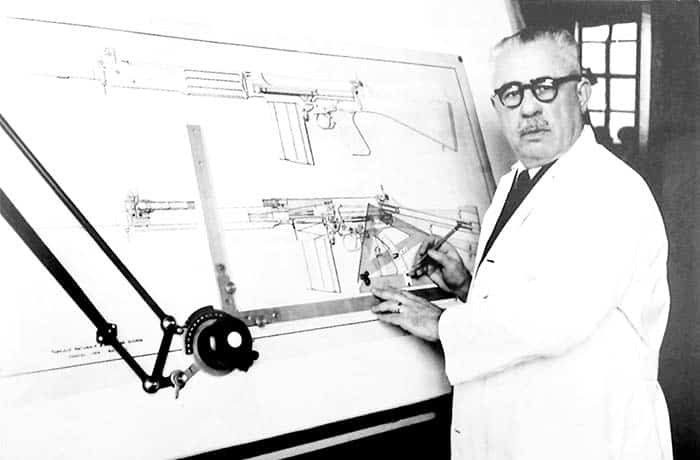
During the war, there were two basic types of cartridges used. The full-power rifle round effective out to 500-meters, and the much smaller pistol cartridge that was used in handguns and submachine guns. When used in a submachine gun the maximum effective range of the pistol round was approximately 150-meters. Weapons using these cartridges each had their own disadvantages, one was too powerful for close-in fighting, and the other was too underpowered for long-range fire. What seemed ideal for most battlefield engagements was a cartridge with size and power somewhere in between the pistol and rifle rounds.
During 1945, the Germans fielded the intermediate 7.92x33mm Kurz cartridge and the revolutionary Sturmgewehr assault rifle. The German midrange cartridge started a worldwide revolution in small arms design. The cartridge provided controllable full-automatic fire for close-range engagements, and accurate fire out to approximately 300-meters. Besides being an effective combat arm, there were quite a few other advantages as well. The smaller cartridges were lighter, allowing the infantryman to carry a larger ammunition load. The ammunition was also cheaper to produce, using fewer critical materials; this was a very important feature during wartime. Probably the most important characteristic of the midrange round was the ability to design and build lighter weapons to fire the cartridge.
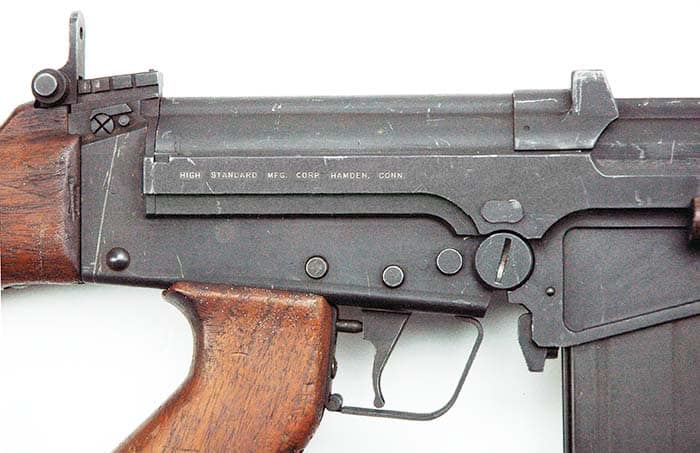
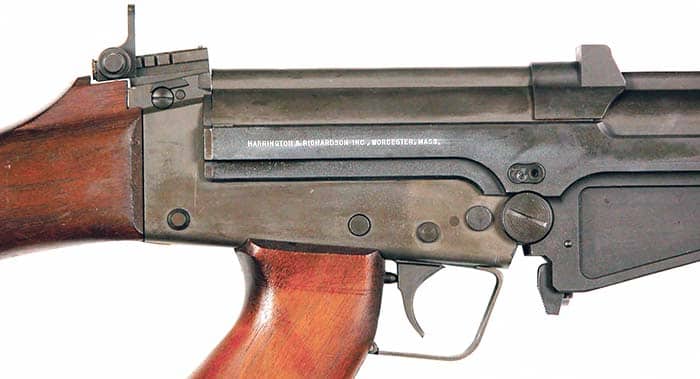
The Soviets fielded their mid-range round and the SKS rifle during the last months of the war. Like the Russians, the British were quick to grasp the German’s midrange cartridge concept and began the development of their own cartridge. The British began their program by establishing the Small Arms Ideal Calibre Panel, which first met in 1945. Research for the determination of the ideal cartridge for an infantry rifle was undertaken by Dr. Richard Beeching, Deputy Chief Engineer of the British Armaments Design Establishment. Dr. Beeching and his staff undertook an unprecedented study of projectile shape, weight, and ballistics to determine the optimum combination needed for a maximum range of 549-meters (or 600-yards). After reviewing the report generated from the extensive scientific study, the Panel proposed a 7x43mm round that had a 140-grain projectile and a muzzle velocity of 2415 feet per second. Although the actual diameter of the projectile was .276 caliber, it was designated by the British as the .280 caliber round.

FN’s very first prototype that led to the FAL rifle was chambered for the German 7.92x33mm cartridge. Working with the British, the next several FN prototype rifles were chambered for the Brit’s .280 caliber cartridge. After the British had designed what they felt was the optimum infantry round for adoption by NATO, they proposed their concept to the U.S. Ordnance Department. The U.S. Ordnance Corps, who were developing their own new cartridge, rejected the British cartridge as having less power than desired in a service rifle round. The United States simply refused to accept any cartridge that had less wounding ability, penetration, and range than the old World War II .30 caliber M2 round. The U.S. wanted NATO to adopt their newly developed the 7.62x51mm cartridge which had similar ballistics as the .30 M2 (30’06) round. In 1952, FN re-designed the FAL rifle to fire the U.S. proposed 7.62mm cartridge. In January 1954, Great Britain purchased a number of the FAL rifles chambered for the new 7.62 NATO cartridge for testing. There was considerable resistance from many NATO members who wanted to adopt a true intermediate cartridge. However, upon persistence from the U.S. Ordnance Department, the U.S. developed 7.62x51mm T65E3 cartridge was officially adopted as the standard small arms round of the NATO alliance in 1954.
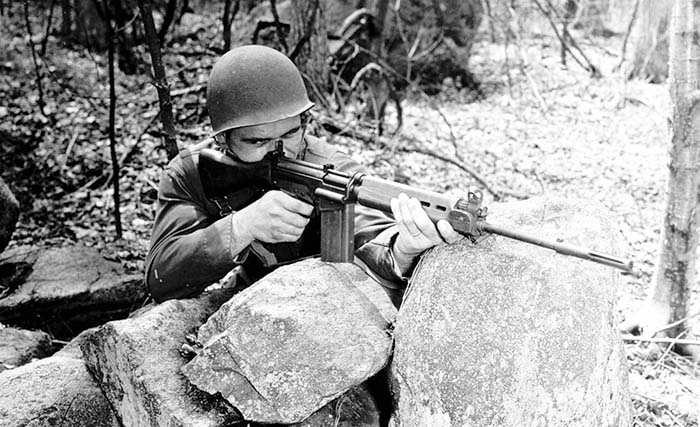
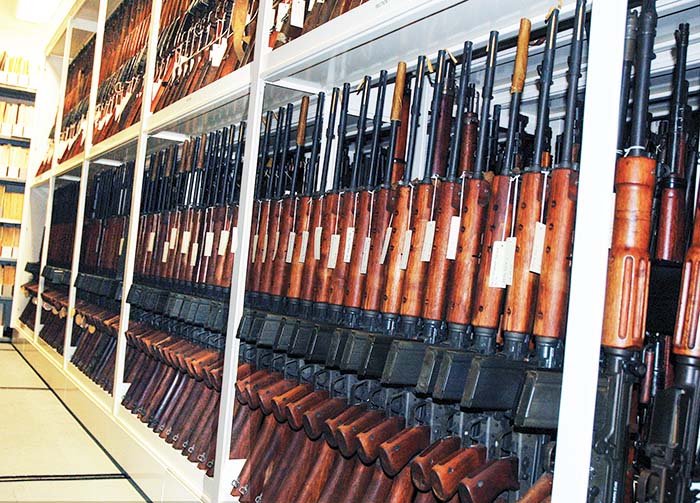
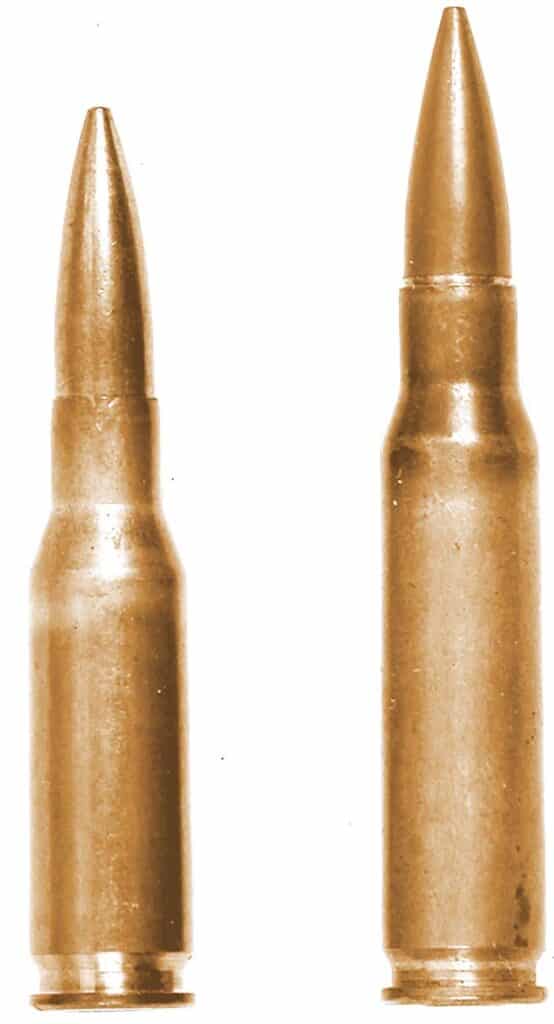
The Belgian FN FAL rifle, as originally manufactured in Europe, was produced using the metric system of measurement. Canada, Great Britain, Australia, and the United States all used the Imperial or English system of inches. Any rifle produced in these countries would need to adhere to their standard of measurement. This resulted in two more variations of the FAL rifle. The metric model, and the inch pattern. Because of the different patterns, many parts including magazines were different. Canada was the first country to adopt the 7.62mm FN FAL, it would be followed by over 90 countries.
In addition to the standard Model 50.00, the standard full stocked version, there was the Model 50.41 Heavy barrel, the Model 50.63 with a folding stock and 18-inch barrel, and the Model 50.64 with a folding stock and a 21-inch barrel. Although the FN FAL is capable of select-fire, most countries issued them as semi-automatic rifles. The full-auto feature was largely reserved for the heavy barrel models. The FAL is gas-operated; the gas system is driven by a short-stroke, spring-loaded piston housed above the barrel. The gas system is fitted with a gas regulator behind the front sight base, allowing adjustment of the gas system for variations in ammunition. The locking mechanism is the tilting breechblock type successfully used in other weapon designs. To lock, it drops down into a shoulder in the receiver. The FAL’s magazine standard capacity is 20 rounds, with 30-round magazines for the heavy barrel select-fire models. In fixed stock versions of the FAL, the recoil spring is housed in the stock, while in folding-stock versions it is housed in the receiver cover, necessitating a slightly different receiver cover, recoil spring, bolt carrier, and a modified lower receiver for the stock.


In 1954, an educational contract was awarded to Harrington & Richardson Inc. to manufacture 500 7.62 mm inch-pattern FN-FALs (T48s) as a study to see what problems might be encountered in the domestic manufacture of the weapon. A small number of FN FAL rifles were also manufactured by the High Standard Company.
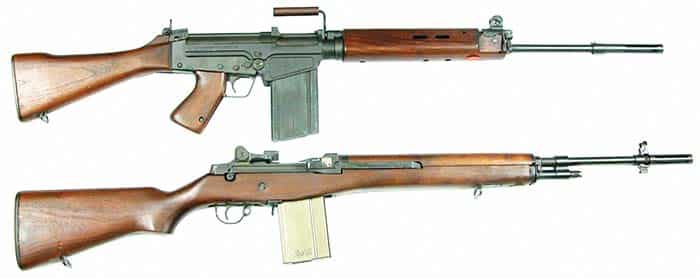
The United States extensively tested several foreign and domestic rifles from 1945 until 1957. In the end, two designs were remaining; the T-44E4, developed at the Springfield Armory, and the FN FAL as the T48 rifle, chambered for the U.S. 7.62 round (T-65). The Ordnance Department finally concluded after years of testing and development that both the 7.62 caliber T-48 (FN-FAL) and the T-44E4 (M14) were “suitable for army use”. In a decision that had been expected by many from the outset of the testing program, the U.S. Ordnance Department declared their own design, the T-44E4 the winner, and the weapon was adopted as the new service rifle of the U.S. Army. It was designated as the “U.S. Rifle 7.62 M14.” The reasons given for choosing the T-44E4 over the T-48 were: the T-44E4 was one pound lighter, had fewer parts, had no need for a manual gas regulator; it would also be easier to manufacture because of the similarities to the M1 rifle. While the U.S. Army adopted the M14, the rest of the free world chose the FN FAL. Many felt that the FAL was rejected by the U.S. because of the “not invented here” factor.
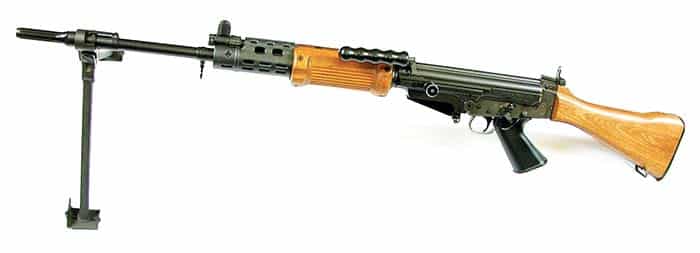
Although adopted in 1957, there were many manufacturing difficulties encountered with the M14 rifle. As a result, the first M14s were not issued until 1959. Production of the M14 ceased in 1964. By 1967 the M14 was being phased out by the 5.56mm M16. The M14 joined the Springfield Model 1892–99 Krag–Jørgensen rifle, as having one of the shortest service lives as the Standard “A” infantry rifle of the U.S. Army. However, many M14 rifles were brought out of storage and updated for limited service in Iraq and Afghanistan. The FN FAL would remain in service with many international armies until the 1980s.











